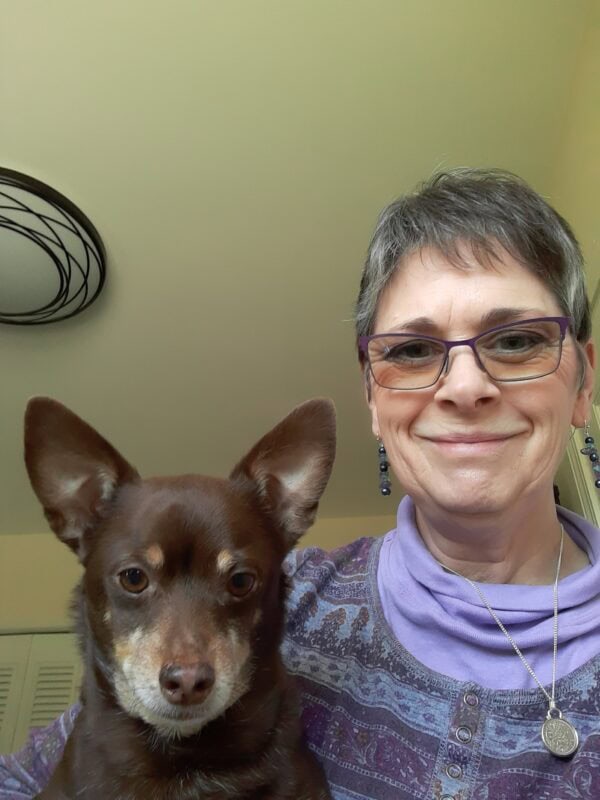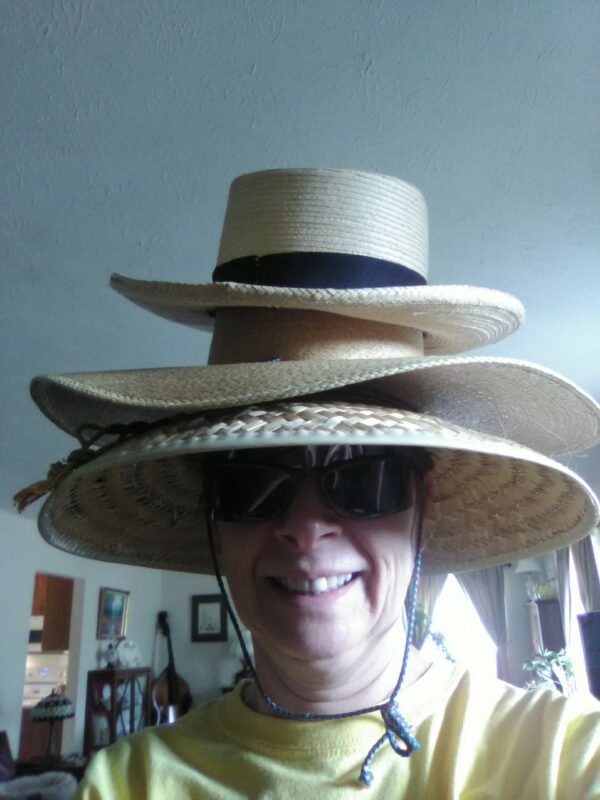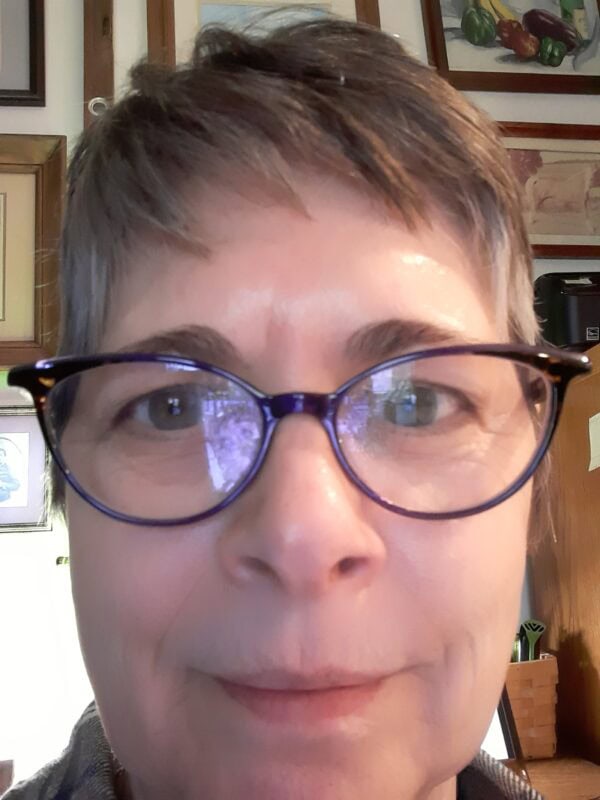STRENGTH IN EVERY STORY™
Finding 'Joy Shots' Amidst the Pain
Ann’s Story, November 2024
As told by: Valerie Stevens, Edited by Fabiola Palomo
Diagnosis received: Migraine with aura, Episodic migraine, Chronic daily persistent headache, Scoliosis
Symptoms: Brain fog, Nausea, Sensitivity to light, Sensitivity to smell, Vertigo, Fainting, Paralysis, Aphasia, Ice-pick head pain, Todd’s syndrome
“If you don’t pick yourself up and move forward, you’ll be stuck.” For a self-described “wannabe hippie and tomboy” and an unwavering can-do attitude, this isn’t just a statement—it’s her mantra.

Ann has lived with migraine for over 60 years, beginning in 1963, when she was 7 or 8 years old. It started after she fell from a high platform while attempting to use a rope swing, landing hard on the back of her head and losing consciousness. The local country doctor told her mother to let her “sleep it off,” and Ann did, for four full days. That head injury marked the beginning of a lifelong struggle with migraine.
In the decades between the 1960s through the 1980s, diagnosing migraine required all of the following symptoms: nausea and vomiting, flashing/blinding auras, sensitivity to light and sound, and excruciating head pain.
Although Ann had all of the symptoms of migraine, her auras did not fit into this rigid description. Her auras were tiny, twinkling lights at the perimeter of her vision, which the doctors refused to accept as an aura. Therefore, it wasn’t until 1994 that Ann received a formal diagnosis of episodic migraine.
Ann’s other aura was a perception disorder called Dysmetropsia, also known as Todd’s Syndrome or Alice in Wonderland Syndrome (AIWS). This disorder distorts perception, making objects appear unusually large or small, or stretched out long and thin.
AIWS can also alter a person’s sense of time, space, and motion, and can lead to people experiencing hallucinations, night terrors, depersonalization, and derealization as well. Once considered rare, very few doctors knew about AIWS or how to recognize it. Ann’s dysmetropsia was finally diagnosed by a neurologist in 2008.
Although Ann’s fall triggered her attacks, migraine had already run in her family. Her mother experienced them throughout college and recognized what was happening to her young daughter. Besides low-dose NSAIDs, the only other medication available to relieve severe pain was a type of opioid powder* consisting of anise oil, benzoic acid, and camphor, often used in the 1950s.
Ann used several over-the-counter medications to battle her headache attacks while continuing to work her multiple jobs and attend community college. Unfortunately, sometimes she and other friends living with migraine exceeded the recommended doses in search of relief.
 Eventually, Ann was prescribed oxycodone and acetaminophen for her scoliosis, which caused her chronic back pain. This medication also helped relieve her migraine attacks. By this time, Ann’s migraine attacks had increased to 15-18 days every month.
Eventually, Ann was prescribed oxycodone and acetaminophen for her scoliosis, which caused her chronic back pain. This medication also helped relieve her migraine attacks. By this time, Ann’s migraine attacks had increased to 15-18 days every month.
Finally, she was prescribed a combination of acetaminophen and propoxyphene for her attacks, but often, not even that medication could ease the pain of migraine.
Like so many people living with headache or migraine, Ann’s treatment history spans a wide spectrum of approaches. Over the decades, she’s been prescribed a combination of acetaminophen, butalbital, and caffeine, as well as a combination of various synthetic opioid and serotonin/norepinephrine reuptake inhibitors, antidepressants, and benzodiazepines. She’s tried triptans, occipital nerve blocks, acupuncture, physical therapy, chiropractors, special mouth guards, and cranial massage therapy. Ann also explored other approaches, learning and practicing meditation as part of her ongoing effort to manage the pain.
Currently, a combination of erenumab, onabotulinumtoxinA (injections), and rimegepant has helped reduce Ann’s migraine attacks from 24 – 28 per month down to around 15.
A turning point came in 2020 after a neuro-behavioral optometrist re-evaluated her childhood fall and diagnosed her as being in a state called the minimally conscious state due to her traumatic brain injury (TBI), which resulted in hypertropia. Hypertropia is a vision misalignment that has been contributing to her migraine attacks. One eye focuses higher than the other, making her brain work harder to align what she sees.
 Ann was fitted with binasal occlusion glasses, which not only corrected her vision but significantly reduced her migraine frequency by interrupting the images being sent to her brain and slowing down the signals, thus lowering the number of migraine days to 10 days per month.
Ann was fitted with binasal occlusion glasses, which not only corrected her vision but significantly reduced her migraine frequency by interrupting the images being sent to her brain and slowing down the signals, thus lowering the number of migraine days to 10 days per month.
Unfortunately, in June of 2023, a fall set her back. “I did a faceplant…and shifted my neck vertebra, pinching a nerve. My migraines have increased back up to 17 per month,” she shared.
Despite the setback, Ann feels hopeful about the care she receives today. “I’m currently blessed with a great migraine team, but what I had to go through before was hell.”
She continues to use a multimodal approach to manage her symptoms: “I feel my treatment…[is] fairly successful. I know the binasal occlusion glasses are definitely a huge help. I also used mindful meditation and an ice hat, which helps a huge amount….” Just recently, Ann had begun using earplugs that work to help prevent weather-triggered migraine attacks.
Although Ann gained some control over her life through meticulous planning, isolation had become a constant in her life. After her TBI, she developed hyperosmia, which combined with migraine, led to the loss of her 22-year career, ending up with 2 years of disability and then early retirement.
Hyperosmia has cut Ann off from society completely because the new fragrances, made from petroleum byproducts, bring on instant migraine attacks. This sensitivity ended Ann’s once active lifestyle, plus any hopes of travel, socializing, or even everyday routines. “The pandemic lockdown was no big deal to me… I had already been living in total isolation for 5 years.”
Ann can detect scents from detergents, perfumes, or dryer sheets from up to 30 feet away, which can trigger debilitating attacks. No longer can she go shopping, head to the post office, or even attend church where her husband is pastor. Friends have drifted away, and visits with family now come with strict scent-free rules.
Despite these circumstances, Ann has found a way to reclaim happiness. In 2018, she read an article about embracing migraine as a friend, leading to an improved lifestyle and prioritizing self-care. Ann pondered this idea for a long time, “’How does one consider a migraine her friend?!’ Mine was a monster that I battled every day. Eventually, turning to God, I realized that God only wants us to be grateful for the life He has given us…. [So], how does someone become grateful for pain?”
Several things happened, one after the other, that changed her mindset. “I watched my dog spinning in circles over my husband returning from work, I decided to join him in displaying our delight that hubby was home,” she recalled. “[The] next day, while drinking a hot cup of cinnamon tea, marveling at the amazing scent and taste, it hit me! These little things in life are the pathway to finding joy in spite of pain.”
Ann may never call migraine a friend, but she no longer holds anger towards it. Instead, she embraces what she calls “Joy Shots,” or small, everyday experiences that spark gratitude. “I realized that little, tiny everyday things that make us smile or laugh, or marvel at the uniqueness of God’s creations, are all little shots of joy God has sent us. However, we must recognize them, acknowledge them, and thank God for bringing them to us, or else they will fly right past us, and we’d never know He had sent them.”
Ann’s “Joy Shots” also includes gardening, physical therapy, lifting light weights, walking, practicing the mandolin, sewing, crocheting, and painting. In addition, Ann finds great joy in baking and cooking. While experimenting with new recipes, learning to bake sourdough bread, and culturing homemade yogurt entertain her and are great distractions from her pain. Plus, they offer great rewards for her efforts.
Besides being able to rely on new treatments and time-tested medications, Ann has also taken more natural remedies into consideration. “Sometimes I feel blessed to have had migraines for so long because I know how to fight migraines without any medication, by using heat and ice, and sometimes that’s what I resort to.”
If Ann could offer one piece of advice, it would be to find peace with living with migraine. “Getting mad at our circumstances is a waste of energy and time,” Ann said. “Migraines are a part of who we are. Hating them is only hating ourselves. Acceptance is the only way to deal with migraines because this is our new reality… [However], that doesn’t mean we can’t continue to try new procedures and medications. If we are lucky to find one that works, that’s a blessing,” shared Ann.
*Disclaimer: This story includes references to the use of various types of opioids. The use of opioids is not recommended for the treatment of headache disorders or migraine disease. Evidence suggests they may be ineffective and carry significant risks of medication overuse headache and dependence. (American Headache Society, 2019)
